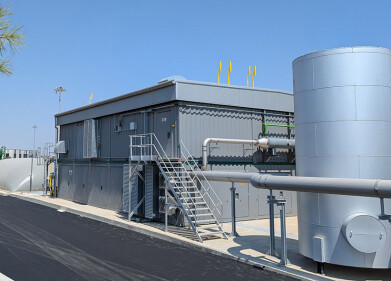Air clean up
Does Opening Windows Reduce Indoor Air Pollution?
Mar 27 2020
Received wisdom has it that while indoor air pollution can often exceed contamination levels found outdoors, opening windows to allow an inflow of fresh air is effective at alleviating the problem. However, a new study from the University of Toronto in Canada has discovered that the measure might not be as effectual as previously believed.
The research, which was published in the journal Science Advances, found that the concentrations of 19 different common household contaminants remained largely the same, even after airing the room for 30 minutes. The findings represent troubling news for those who spent a lot of time in the home, especially after cooking or cleaning, since it appears to be far more difficult to shift the pollution than previously thought.
Better out than in
It has been previously discovered that the air quality inside our homes could be up to three times worse than that found on the streets outside. This is because a variety of contaminants and chemicals are released during the processes of cooking and cleaning. Unlike outdoor environments, there is nowhere for these pollutants to go inside, so they end up accumulating in the atmosphere.
However, scientists had previously assumed that using extractor fans and opening windows to increase ventilation would solve the problem. Chen Wang, the lead author on the recent Canadian study, wished to put the efficacy of that latter measure to the test. Her conclusions suggested that opening the window might not be sufficient to rid a home of its damaging particles.
Rapid air-surface partitioning
To conduct her experiment, Wang and her constructed a mock home and performed similar activities as might take place in an actual home, such as cooking and cleaning. Then, using sophisticated wide-ranging particulate sensor equipment, they measured the concentrations of 19 household contaminants. The contaminants came from a variety of sources and contained diverse properties, so as best to replicate real-world conditions.
The team then ventilated the mock house by opening its windows and doors, measuring the contaminants’ concentrations once more after 15 minutes and again after 30 minutes. They found that rapid air-surface partitioning had taken place, which basically means that the particles clung to walls, furnishings and other surfaces and lingered behind.
Uncertain conclusions
“It’s quite a surprise,” explained Wang. “We thought that when we diluted the volume of the air in the house, [these] may just get removed and mix with the outside air.” But while the study certainly showed that contaminants can not be as easily gotten rid of as previously assumed, it’s not yet clear whether they pose a risk to human health.
However, the problem is only likely to become more pronounced as we move forwards. Modern houses are often built on the principle that airtight seals reduce the amount of heat that can escape, thus making them more energy efficient and environmentally friendly. However, unless appropriate ventilation systems are also incorporated into new designs, the issue of indoor air pollution will not improve.
Events
May 18 2025 Algiers, Algeria
23rd International Water Management Exhibition
May 20 2025 Prague, Czech Republic
Jun 17 2025 Guangzhou, China
Singapore International Water Week Spotlight 2025
Jun 23 2025 Singapore
Jun 25 2025 Sao Paulo, Brasil














